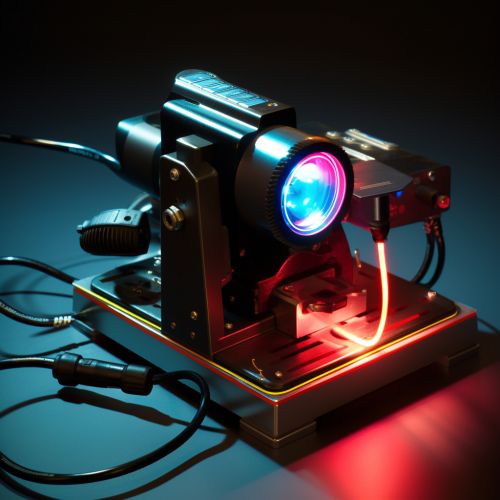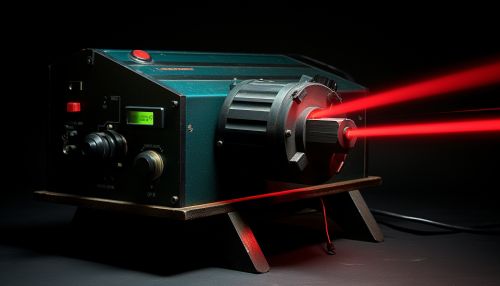Laser
Introduction
A laser is a device that emits light through a process of optical amplification based on the stimulated emission of electromagnetic radiation. The term "laser" originated as an acronym for "Light Amplification by Stimulated Emission of Radiation".
History
The first working laser was built in 1960 by Maiman at Hughes Research Laboratories, based on theoretical work by Townes and Schawlow.
Principle of operation
Lasers are distinguished from other light sources by their coherence. Spatial coherence is typically expressed through the output being a narrow beam, which is diffraction-limited.


Types of lasers
There are many types of lasers: gas lasers, fiber lasers, solid state lasers, dye lasers, diode lasers and excimer lasers. All these types of lasers have in common that they emit light that is highly directional, single-color, and of high intensity.
Applications
Lasers range in size from microscopic diode lasers (with diverse applications in telecommunications, medicine and bar-code scanning) to football field sized neodymium glass lasers used for inertial confinement fusion, nuclear weapons research and other high energy density physics experiments.
Safety
Even the smallest of lasers can be harmful to the human eye. The brightness of the beam of a typical handheld laser pointer can be dangerous to the human eye.
